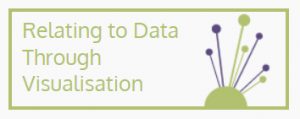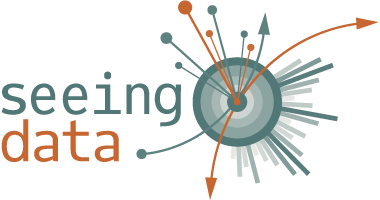From taxonomies to measuring effectiveness: my visualisation research journey

I first became aware of the Seeing Data research whilst undertaking a visualisation module within the Centre for Interdisciplinary Methodologies whilst working towards my masters degree in Digital Media and Culture. At this point I was still relatively new to the area of visualisation research but was instantly interested in the themes and papers produced by the project. I realised having completed the visualisation module that visualisation was the topic that I wanted to write my MA dissertation on.
My dissertation topic was ‘What happens when visualisation doesn’t visualise: Towards a taxonomy of visualisation’. The topic grew out of an interest I had developed around online discussions that I had been following both on Twitter and various blogs about distinguishing between data visualisation and data art. My title came from how aspects of the discussion suggested particular aesthetic and/or style choices employed by a data visualisation rendered it a data visualisation no more and instead it manifests itself as a piece of data art.
I found myself disagreeing with the criteria and examples given as data art and decided to deploy a taxonomy built from existing models developed by various authors to critique and provide a more rigorous means to measure whether a visualisation was actually visualising. My model was built on the work of Kosara and Ziemkiewicz which in turn had built on the works of Chi, Shneiderman, Card and Mackinlay, Bertin and, Tory and Moller.
The model I developed was built of two stages, firstly the data mapping followed by the visualisation. The data stage incorporated bijective mapping of data onto unique graphical elements, drawn from the work of Ziemkiewicz and Kosara. It also employed the semantic notational model of Goodman where each glyph maintains a distinct meaning regardless of context. The second stage, the visualisation stage simply sought for the visualisation to be readable and recognisable as a visualisation. The model was designed to critique the focus on style that seemed to dominate the discussion around data visualisation and data art. As many data visualisations were rejected as such and deemed data art due to stylistic choices such as being hand drawn rather than computer made, rather than on their content or function.
Upon completion of my masters I became aware of an opportunity to join Seeing Data as part of the ‘Relating to Data Through Visualisation’ project as one of the funded PhD researchers. Fortunately, my application was successful. My first few months of PhD have seen me join various research groups such as the Critical Data Studies Group, Visualisation Network, Visual Media and Communication Group and the Digital Cultures Research Group. I was recently invited to a Multimodality Research workshop where I presented my research and had the fantastic opportunity of receiving feedback from Theo van Leeuwen and Gunther Kress in response to my presentation on the potential insights that could be afforded by deploying a multimodal approach to my research. I will also be attending the DMI Summer School in Amsterdam from the 26th June until the 7th July with this year’s theme being ‘Visual Methodologies’ where I hope to develop my understanding of how I might apply digital methods in my research. So, plenty of exciting opportunities already!
I look forward to continuing to work with my supervisors Chris Birchall and Paul Clough, with the first aim to develop a definition of what an effective visualisation is through investigating existing literature as was as developing my research questions. With my emphasis directed at looking at data visualisation effectiveness and user engagement, my questions centre around the quantification of user engagement, issues of context and the diverse nature of users of data visualisation.
